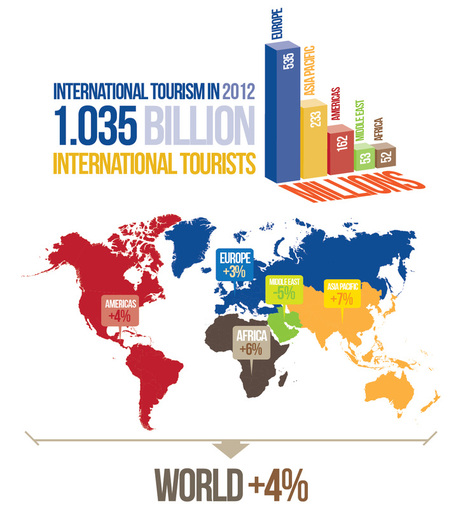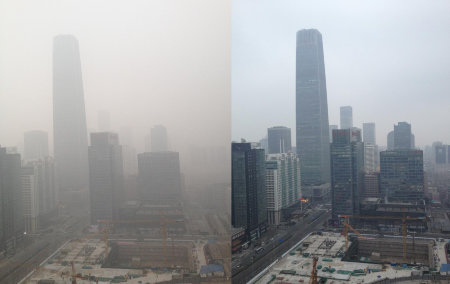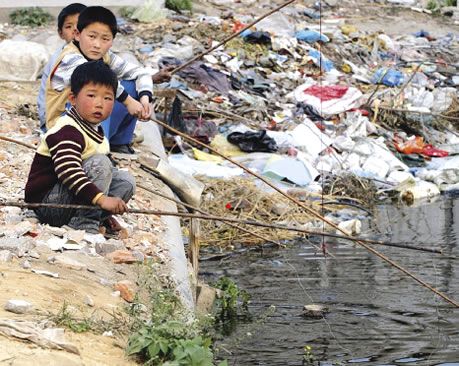I participated in the "Contemporary Issues in International Tourism" course with Dr. Linda Ralston in this spring semester. We are required to participate in such an upper division writing and communicating course. As an Chinese international students, I really learned a lot and improved my English reading and writing skills. On the other hand, I realized that current Issues, such as World Peace, Human Rights, Climate Change, Fair Trade, would directly impact the international travel industry. We need to preserve different culture and let more tourists be amazed by unique geology and landforms.

UNWTO forecasts further growth in international tourism in 2013
International tourism was defined as "Any person visiting a country, other than that in which he/she usually resides, for a period of at least 24 hours" (Committee of Statistical Experts of the League of Nations, 1937).
This international tourism course covers the travel and global awareness, the tourism system and the role of information & Internet, Interpretation in tourism, using social media to educate & create awareness, ethical marketing & travel motivations, sustainable tourism/ecotourism or eco-sell, climate change, diminishing resources & tourism, consumerism & fair trade tourism to alleviate poverty, access vs culturally authentic experiences, culturally aware v.s communization, sex tourism or exploitation, terrorism, crisis, crime & tourist safety, work on project posters & presentations (Ralston, 2013). It includes the current hot issues, tourism tendency, and management strategies. It also use social media tools, such as Pinterest, Weebly Blog, Twitter, Facebook, to improve the popularity of international tourism.
Since I took the international tourism course, I learned from Dr. Linda Raslton about different cross-border influencing the international tourism system, including language, cultural, economic, political, etc. There are some advantages and disadvantages of tourism, but there are no doubts that it's very important to develop and improve international tourism. Leiper (1990) identified five elements of the tourism system, which includes a human element (tourist), three Geographical regions (Traveler-generating region, transit route, tourist destination region) and one industrial element (the traditional view of tourism providers).(Leiper, 1990)
As my emphasis area is hospitality management and international tourism, I learned a lot from this course to figure out how to combine these two components together. Dr. Linda Ralston showed the power of social media to educate and create awareness of people's social behavior. For instance, how to protect the environment while traveling as well as stimuli people's travel motivation towards Sustainable tourism and ecotourism. Meanwhile, motivating the culturally awareness and decreasing the travel risk is a basic understanding as an international tourism investigator.
In Short, I will use what I learned from this course to plan some choreographed trips for international travelers.
According to the course, I chose the Climate Change in China as my topic. With the development of technology and science in China, protecting environment became a big issue in China. There are some negative phenomena existing these days, such as air pollution, water pollution, etc. According to the official statistic in China, there are more than 90% Chinese rivers being polluted and few awareness of the environmental issues of Chinese made this situation get worse.

Since China is the biggest developing country in the world, the environment of China gets the worldwide attention, especially the impacts of climate change to the livelihood of Chinese people. These days, the Chinese Government tries to embrace carbon trading, and in fact, it is building the world's biggest solar plant. A Mckinsey report shows that China has reduced the amount of carbon dioxide and other greenhouse gases that it produces for every unit of GDP by 4.9% each year on average over the past 15 years (Leon, 2009). China comes to recognize the risk of climate change and the importance of green energy. Given the big size of Chinese market, there are more opportunities of China for global companies to invest in this fast growing economy. How to take measures to the climate change in China and provide more green energy to protect the environment will be a big issue for Chinese government, even the United Nations.
Reference:
A.K. Bhatia (2001). International Tourism Management, Committee of Statistical Experts of the League of Nations, p69.
Odedra, R.(2013). UNWTO forecasts further growth in international tourism in 2013. The Moodie report. Website was opened online:
http://www.moodiereport.com/document.php?c_id=6&doc_id=33958
A.K. Bhatia (2001). International Tourism Management, Committee of Statistical Experts of the League of Nations, p69.
Odedra, R.(2013). UNWTO forecasts further growth in international tourism in 2013. The Moodie report. Website was opened online:
http://www.moodiereport.com/document.php?c_id=6&doc_id=33958



 RSS Feed
RSS Feed